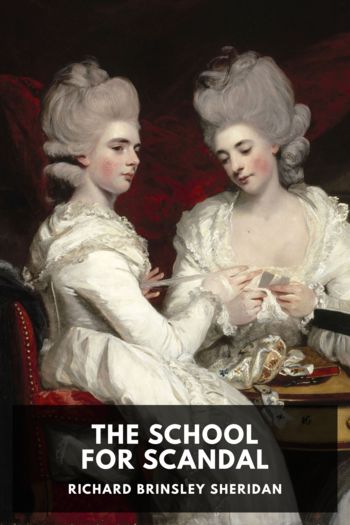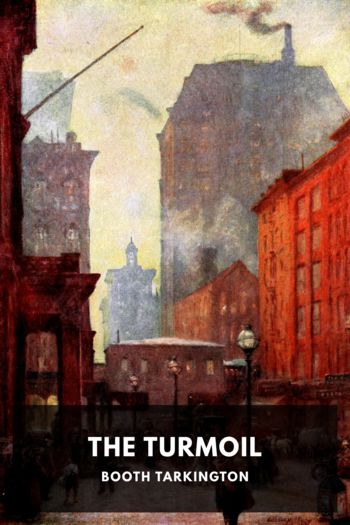Malaysian Maverick: Mahathir Mohamad in Turbulent Times Barry Wain (grave mercy .TXT) 📖

- Author: Barry Wain
Book online «Malaysian Maverick: Mahathir Mohamad in Turbulent Times Barry Wain (grave mercy .TXT) 📖». Author Barry Wain
Malaysia's most visible foray into heavy industry was in pursuit of a goal dearest to Dr. Mahathir's heart, a national car. It became a reality and a point of considerable pride for many Malaysians before succumbing to the laws of economics. Having commissioned a feasibility study as early as 1980, Dr. Mahathir nursed the venture for two decades, glorying in its many milestones and stubbornly resisting its numerous setbacks, before railing against its inevitable decline. With Dr. Mahathir in retirement after 2003 and no longer able to protect it against foreign rivals, Malaysia's car simply ran out of competitive gas.
HICOM and two Mitsubishi companies formed a 70 per cent-Malaysian owned joint venture in 1983, Perusahaan Otomobil Nasional, known as Proton, and promised to have a car on the road "in record time". The prime minister was fed up with the slow pace at which local assemblers of foreign vehicles were increasing their Malaysian content. He also was prepared to write off private-sector attempts to establish complementary car industries in the then five-member Association of Southeast Asian Nations (ASEAN), where parts produced in one country might qualify as local content in the others.
Although the first Proton Saga was essentially a Mitsubishi Lancer Fiore, imported in crates and assembled in Malaysia, Dr. Mahathir drove it off the assembly line in September 1985 in a burst of ribbons, balloons and nationalistic hoopla. He had a stretch version made as his official car. Proton's logo initially featured the crest from Malaysia's coat of arms, and subsequent models followed the Saga, meaning a kind of seed from the saga tree, in bearing patriotic Malay names: Wira (hero) and Putra (prince). And the Proton assembly line was depicted on the country's 100-ringgit note.
In contrast to South Korea, Taiwan and elsewhere, Proton did not seek to export, even as worldwide auto trends made economic nationalism a precarious adventure. Proton took aim squarely at the domestic market, where Malaysians had developed a love affair with the car in the buoyant 1970s. In Asia in the early 1980s, per capita auto ownership in Malaysia trailed only Japan and Singapore, with sales of about 90,000 cars a year. By offering a four-door sedan with a choice of 1300 c.c. or 1500 c.c. engines, Proton targeted the segment of the market accounting for the bulk of sales. Proton expected demand to keep increasing by leaps and bounds, and figured the company could capture 60 per cent of it in the first year.
But those easy assumptions evaporated as the Malaysian economy stagnated and passenger-car sales dropped to fewer than 70,000 in 1985 and 40,000 in 1986.[46] At the same time, Proton's costs soared, reflecting the price of yen-denominated loans and parts imported from Japan. As the yen continued to appreciate, Proton was forced to raise its prices, further dampening sales, though the company also had to absorb mounting losses to hold its position as Malaysia's cheapest auto. By the end of 1986, the Proton plant was working only three days a week. It produced about 24,000 cars during the year, less than a third of the 80,000-unit capacity under a two-shift schedule, and the outlook was no better for 1987.[47] Each sale was costing Proton an estimated RM35,000. In desperation, the company turned to export markets.
Highly protected at home and not designed for sale abroad, Proton predictably flopped. Exports accounted for only about 10 per cent of production in the mid-1990s, and declined later. Small numbers of vehicles were shipped to Bangladesh and other Asian and Middle Eastern countries with low emission and safety standards. They proved more popular in Britain, where they required more than 400 costly modifications to meet British standards,[48] but could not escape their stodgy image. Despite being given catchier names later, such as Gen-2 and Savvy, they appealed mostly to elderly drivers and car rental companies that were offered generous buy-back arrangements.
Nonetheless, Proton on paper became one of Malaysia's most successful and financially sound companies. It soon dominated the Malaysian car market, the biggest in Southeast Asia, capturing more than 70 per cent at its peak in 1988. After four straight years of losses, the company announced a modest profit in 1989. Earnings over the next year wiped out accumulated losses, and Proton Holdings Bhd. was listed on the stock exchange in 1992, where it became a favourite of institutional investors. By 2003, the company had cash reserves of RM4 billion and projected profitability.
But Proton's success came at a heavy cost to Malaysian consumers: taxes ranging from 140 per cent to 300 per cent on imported vehicles, and up to 40 per cent on cars locally assembled from imported kits. Built in to the protection, and little known to the motoring public being slugged, was an opaque import-licensing system for foreign cars. Introduced in the mid-1970s to encourage bumiputras to enter the vehicle distribution business, then dominated by foreign companies and business groups owned by Chinese Malaysians, the system covered trucks and motorbikes as well as cars. With the creation of Proton, the licensing system was blended with tariffs to protect the national car. Licensees were granted permits, which every vehicle manufactured or assembled outside Malaysia had to secure before it could be imported and sold locally. The Ministry of International Trade and Industry issued the permits to companies controlled by bumiputra investors. They did not have to bid openly, and nor did they have





Comments (0)